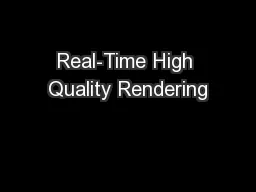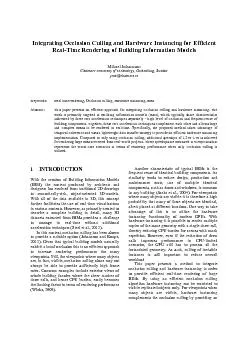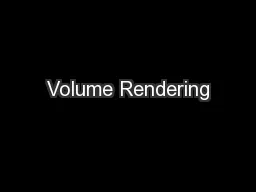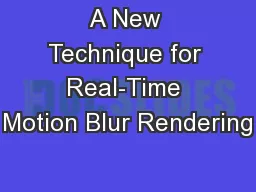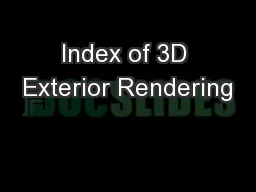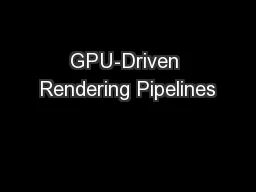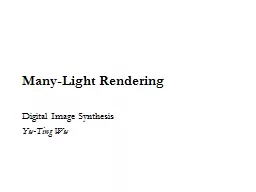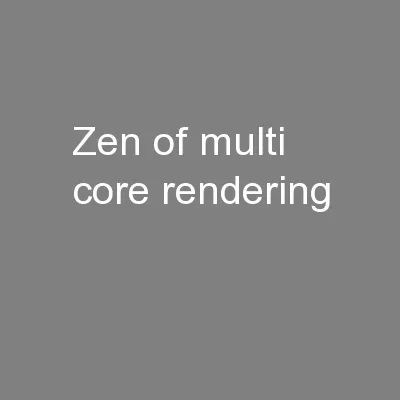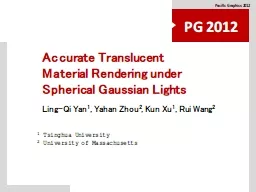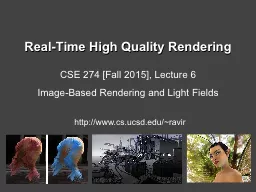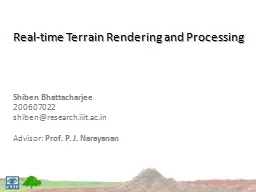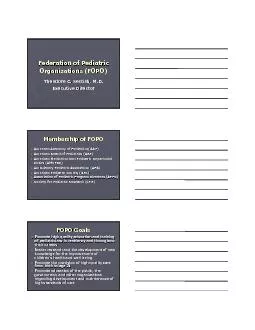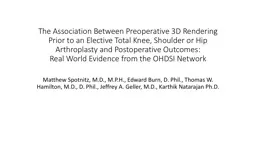PPT-Real-Time High Quality Rendering
Author : karlyn-bohler | Published Date : 2016-07-01
CSE 274 Fall 2015 Lecture 2 Graphics Hardware Pipeline Reflection and Rendering Equations Taxonomy of Methods http wwwcsucsdedu ravir Outline of Lecture Basics
Presentation Embed Code
Download Presentation
Download Presentation The PPT/PDF document "Real-Time High Quality Rendering" is the property of its rightful owner. Permission is granted to download and print the materials on this website for personal, non-commercial use only, and to display it on your personal computer provided you do not modify the materials and that you retain all copyright notices contained in the materials. By downloading content from our website, you accept the terms of this agreement.
Real-Time High Quality Rendering: Transcript
Download Rules Of Document
"Real-Time High Quality Rendering"The content belongs to its owner. You may download and print it for personal use, without modification, and keep all copyright notices. By downloading, you agree to these terms.
Related Documents

